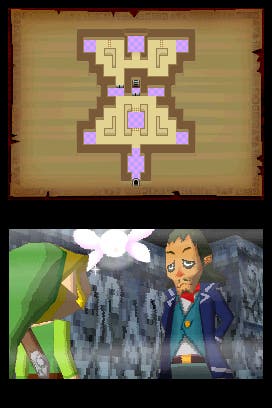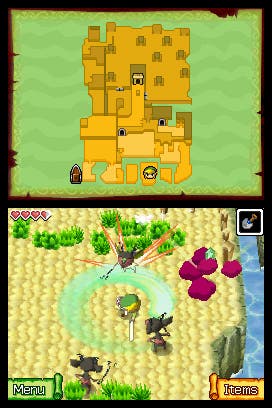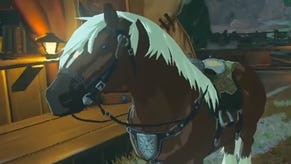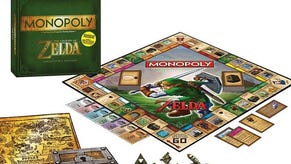The Legend of Zelda: Phantom Hourglass
For those who can't wait...
Don't buy this game. Which is to say, don't buy the game called Zelda no Densetsu: Mugen no Sunadokei. The game we've struggled through in Japanese, with the aid of a dog-eared printout from GameFAQs, in order to bring you this import review.
In fact, it's quite playable. By Zelda standards, the first DS entry in the series is all action and no talk: a lean, fighting-fit, fast-paced, dungeon-crawling, puzzle-solving adventure that's relatively light on towns, side-quests and social duties. But the myth-making will go over your head, you'll have to cheat your way through the riddles, you won't get the jokes, and subtleties of story, mood and character will completely pass you by. And Phantom Hourglass is far, far, far too good to miss out on a single moment.
Since we're buried under brilliant DS software as diverse as Slitherlink, Ouendan, Animal Crossing and Phoenix Wright, odds are you weren't waiting for the DS's defining masterpiece. But here it is anyway. Here's the game, were it any other console, we'd have been dying to play for years; the one that happens when brilliant minds squeeze every last drop out of a piece of hardware, the one that makes the competition look like idiots within minutes of play.

The first thing that stuns you is the control interface. It's so staggeringly intuitive, simple and slick that you can't quite believe third-person DS adventures haven't been made this way since day one, and you're certain they all will be from now on. The game, which is in 3D but viewed top-down in a classic Zelda style, can be controlled entirely with the stylus (although there are some useful button shortcuts). Just point in the direction you want Link to go and he'll go there, running faster the further away your fairy/cursor/stylus tip is. Tap on a chest you want him to open, a person you want him to speak to, a key you want him to pick up, and he'll do it. Slash, tap, circle and wiggle to perform sword attacks and rolls.
Like so much of Phantom Hourglass, the items on offer follow the well-worn path of Zelda tradition, but are transformed by the DS. Bombs land exactly where you want them, volleys of arrows are launched with astonishing accuracy and speed, the boomerang curls round any path you draw for it. The ease, precision and total tactile enjoyment of playing with Link and his toys is devastating. God help the competition if Nintendo ever achieves the same feat with a Wii game.
The second thing that stuns you - and yes, the controls are so good that it does take a while to get to it, a couple of paragraphs to be preicse - is the graphics. Phantom Hourglass follows the events of the GameCube's Wind Waker, and does an unbelievably successful job of aping its visual style too, wisely focusing on creating expressive and beautifully-animated characters rather than effects, or environmental detail. As happy as most fans were to see Twilight Princess revive Ocarina's epic mood, the immense charm and polish of Wind Waker's art deserved better than the scrap heap, and so it's a delight to see it continued here.

And then there's the map. It's no exaggeration, nor is it irrelevant, to say that Phantom Hourglass has the best map system in any game, ever. The fact that you can annotate your map by just pulling it down and drawing on it isn't just an enormous boon when it comes to keeping track of mysteries, remembering warp symbols, plotting routes and solving the beautiful puzzles and treasure-hunts designed specifically around this feature. It captures a spirit of adventure as successfully as any of the 3D games' grand gestures or sweeping vistas, putting you in Link's boots as he scribbles away, cutely, on the top screen, turning a gamey convenience into a whole new way to appreciate, interact with and understand the game's world.
The map and controls are only the most important of the many ways that producer Eiji Aonuma and his team have found to exploit the DS hardware for fun and involvment. Transfer a stamp from screen to screen by closing the DS, snuff out candles by blowing into the mic, guide your treasure-seeking winch with a steady hand on the lever, sign for a letter, transcribe symbols and clues from signs, battle towering bosses in full 3D by propelling yourself into the top screen. There are countless moments like this, exquisite little throwaway ideas that make you grin like an idiot all the way to the next one, and they just keep coming.















